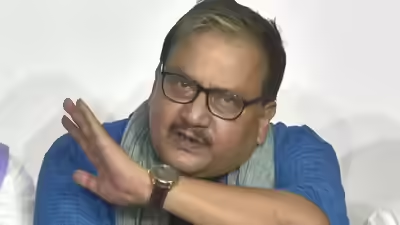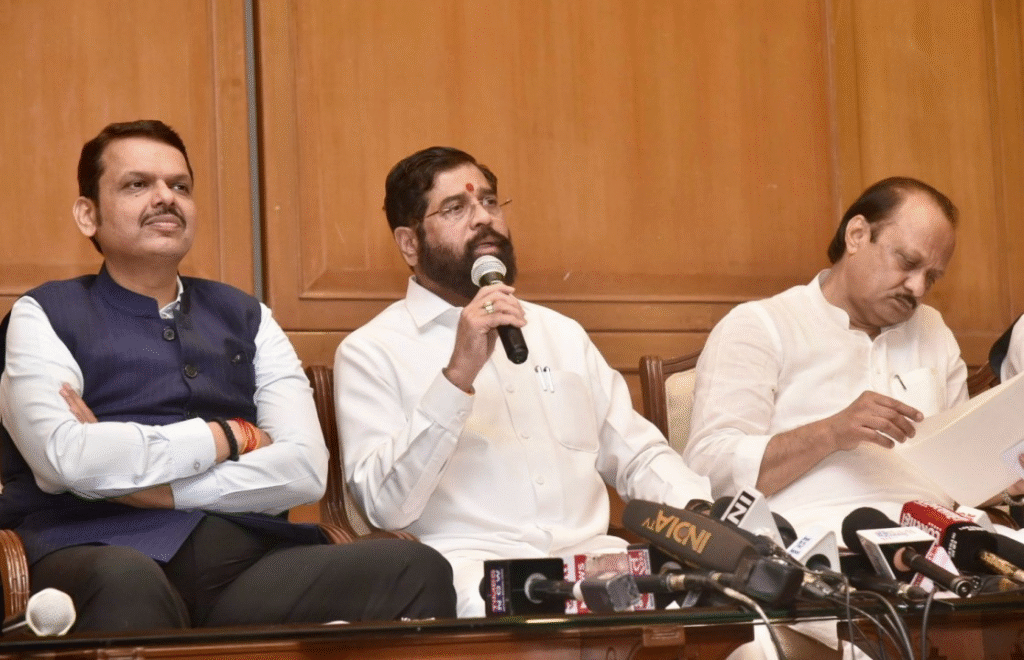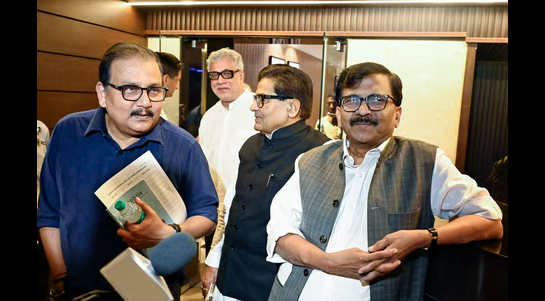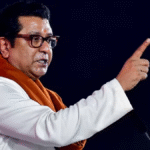ECI Issues 1 Official Clarification on RJD MP Manoj Jha’s Electoral Roll Post Shared by 5M+ Users
ECI issues 1 official clarification on RJD MP Manoj Jha’s electoral roll post shared by 5M+ users, detailing the facts behind viral voter list data claims.
ECI Launches #ECIFactCheck Campaign Amid Opposition Criticism
In a striking move that underscores rising political tensions in poll-bound Bihar, the Election Commission of India (ECI) has launched a digital counter-campaign to tackle what it terms as “misleading narratives” being spread by opposition leaders regarding the ongoing Special Intensive Revision (SIR) of the electoral rolls. Using the hashtag #ECIFactCheck, the Commission has taken to its official X (formerly Twitter) handle to issue direct rebuttals against statements made by political leaders, challenging the authenticity and intent behind their claims.
Among those fact-checked by the ECI so far are prominent national and regional figures including Congress President Mallikarjun Kharge, Rashtriya Janata Dal (RJD) leaders Tejashwi Yadav and Manoj Kumar Jha, Trinamool Congress (TMC) spokesperson Sagarika Ghose, and political activist Yogendra Yadav. These leaders had shared various posts alleging discrepancies and political bias in the electoral roll revision process.
On Wednesday, July 10, RJD MP Manoj Jha posted what he claimed was an official ECI letter confirming a scheduled meeting with party leaders. The post accused the ECI of “reneging” on an earlier commitment, saying that while the Commission had initially agreed to meet RJD representatives after 12 PM on July 10, it later refused. “Dear EC ji, is this not your own letter? When we pointed out the time after noon on July 10, your people, after initially agreeing, are now refusing to meet,” Jha posted in Hindi. He also urged the Commission to act impartially under its constitutional mandate, referencing Section 324 of the Constitution which empowers the ECI to oversee free and fair elections.
In a prompt and assertive reply, the ECI labelled Jha’s claims as “misleading,” stating that it had received “no communication” from either RJD president Lalu Prasad Yadav or his authorised representative Tejashwi Yadav requesting such a meeting. “Manoj Jha has not been authorised by President of RJD to communicate with ECI vide their letter dated April 03, 2025,” the ECI said, referencing a formal document to support its position.
This digital confrontation marks a significant shift in how the ECI is publicly managing political criticism. Traditionally perceived as a silent constitutional body, the Commission’s decision to publicly counter elected leaders and prominent voices via social media represents a new phase of engagement — one that seeks to defend its procedural integrity in real-time.
Senior officials at the ECI defended this approach. “We could see a lot of misinformation being spread by the opposition on SIR, and EC had no way to put it out on social media that these claims are false,” said a senior Commission official. “So, we started the fact check based on three things — the law, the constitution, and the truth.”
This direct counteroffensive arrives at a critical juncture for Bihar, where the electoral roll revision has become a political flashpoint ahead of the upcoming elections. The SIR exercise, intended to clean and update voter databases, has been portrayed by opposition leaders as a potential tool for exclusion and manipulation, particularly targeting the strongholds of rival political factions.
Meanwhile, the ECI also released fresh statistics regarding the ongoing SIR. As of Wednesday, 57.48% of enumeration forms have been collected, and 98% of forms have already been distributed across the designated areas. These numbers suggest substantial progress in the electoral roll update despite the mounting political controversy.
The Commission’s emphasis on data transparency, accompanied by its public engagement on social media, appears to be a bid to assure the public — and critics — of its neutrality and commitment to electoral integrity.
Strategic Communication and the New Role of the ECI in Public Discourse
The Election Commission of India’s shift towards proactive public communication is not merely a digital facelift — it signals a recalibration of institutional behavior in response to a rapidly evolving political landscape. With misinformation proliferating across social media platforms, constitutional authorities like the ECI find themselves compelled to intervene not just through administrative orders, but through real-time public engagement.
The rise of hashtags such as #ECIFactCheck marks a moment in Indian electoral history where the ECI has entered the terrain of political narrative-building. While fact-checking by newsrooms and civil society groups has grown steadily over the last decade, a statutory body like the ECI taking on the role of arbiter over public claims made by political actors is relatively unprecedented.
This development carries implications for institutional accountability and public trust. On one hand, such direct fact-checks can clarify doubts, reduce confusion, and counteract efforts to undermine electoral processes. On the other, critics may argue that selective rebuttals could expose the Commission to further accusations of partiality.
Nevertheless, the Commission has so far maintained that it will continue to rely on documentary evidence, statutory provisions, and process transparency to defend its stance. Senior officials have confirmed that all responses issued under the #ECIFactCheck banner are vetted internally and backed by official records.
“The entire idea is not just political. This is about defending institutional credibility,” said a senior source within the Commission. “If we allow fake narratives to proliferate without challenge, public confidence in the democratic process suffers.”
As the revision of electoral rolls continues in Bihar — a state known for its politically sensitive voter base — the ECI’s real-time pushback may set the tone for how future disputes over voter data, delimitation, or electoral boundaries are addressed in the digital public sphere.
Opposition’s Political Strategy and the Electoral Roll Controversy
Opposition parties have long viewed the electoral roll revision process as more than a routine administrative exercise. In states like Bihar — where caste, regional, and community-based identities drive voter loyalties — any change in voter rolls is politically sensitive. This context explains the fierce pushback seen from leaders like Tejashwi Yadav, Manoj Jha, and Mallikarjun Kharge.
The core of the opposition’s argument revolves around perceived non-transparency in the process. They have accused the Election Commission of conducting the Special Intensive Revision (SIR) without adequate consultation, failing to provide sufficient data on deletions, and not ensuring full public participation in enumeration drives. The use of the term “disenfranchisement” in several opposition posts suggests fears that voter deletion may be skewed to favor the ruling dispensation.
RJD MP Manoj Jha’s viral post alleging that the ECI had agreed and then backed out of a scheduled meeting is only the latest in a series of accusations aimed at discrediting the Commission’s neutrality. Jha’s assertion that the Commission should act “under Section 324” was not just rhetorical — it was a political appeal to invoke the ECI’s constitutional duty to act independently of any ruling political influence.
ECI’s counter, citing its internal documentation and the lack of official communication from authorized RJD representatives, shows that the Commission is leaning on procedural rigor to counter such charges.

Digital Misinformation and Institutional Vulnerability
The use of social media platforms like X (formerly Twitter) as battlegrounds for electoral legitimacy has introduced a new dimension of complexity to the Election Commission’s role. The platform’s viral nature — where a claim, whether true or false, can reach millions within hours — has forced institutions to develop rapid response strategies.
This is where the #ECIFactCheck campaign represents a significant evolution. By directly countering posts with official records and documentation, the ECI is attempting to not only stem the flow of misinformation but also reclaim authority in the electoral discourse.
Still, this digital responsiveness does not shield the ECI from public scrutiny. Some observers argue that selective responses or delayed rebuttals could lead to accusations of bias. Therefore, a transparent fact-checking framework, consistent criteria for intervention, and equal treatment of all political actors are essential to ensure the credibility of this new initiative.
Historical Precedents and the 2018 Supreme Court Directive
The controversy around electoral roll revisions in Bihar is not new. The ECI’s efforts today are part of a compliance trajectory following a 2018 Supreme Court ruling that ordered strict enforcement of vehicle-age and pollution norms — a decision that also inspired administrative tightening in areas like ID verification, roll cleansing, and digital enumeration in voter lists.
The 2018 judgment underscored the need for robust, updated voter lists to prevent impersonation and electoral fraud. In the years since, the ECI has invested in ANPR (Automatic Number Plate Recognition) systems, digital enumeration tools, and AI-assisted form validation — all of which play a role in the current SIR operations.
But these technological innovations have not always been immune from criticism. The opposition argues that a lack of human interface and poor outreach efforts have led to confusion, under-reporting, and the potential exclusion of genuine voters.
The Role of Civil Society and Election Watchdogs
Apart from political parties, several civil society organizations and election watchdogs have also raised red flags about the opacity surrounding the Special Intensive Revision. Groups like the Association for Democratic Reforms (ADR) and National Election Watch have emphasized the need for clear public notices, multilingual information dissemination, and third-party audits of deletions from voter rolls.
These stakeholders argue that electoral reforms are most successful when they are inclusive. They have called upon the ECI to proactively publish weekly SIR progress reports, ensure accessibility for people with disabilities, and maintain helplines in local languages.
The current backlash thus reflects not just political dissatisfaction but broader civic concerns about electoral fairness and democratic participation.
Enumeration Metrics and State-Level Comparisons
The ECI’s press note on Wednesday claimed that 57.48% of enumeration forms had been collected and that 98% had already been distributed in Bihar. While these figures may indicate efficient logistical execution, they offer limited insight into quality and demographic representation.
For instance, enumeration completion in urban versus rural constituencies often shows significant disparity. Districts like Patna, Bhagalpur, and Muzaffarpur typically exhibit higher enumeration rates, while remote districts — especially those with tribal or migrant populations — tend to lag behind.
To contextualize progress, state-level comparisons matter. In 2023, similar SIR exercises in Maharashtra and Tamil Nadu showed enumeration form completion rates between 60–75% within the same period, but with markedly different deletion rates. Bihar’s deletion trends, once published, will be closely scrutinized to determine if there is disproportionate impact on particular communities.
Legal Framing Under Section 324 of the Constitution
Section 324 of the Indian Constitution vests the Election Commission with the powers to supervise, direct, and control the conduct of elections to the Parliament and state legislatures. This clause is the bedrock of the ECI’s autonomous role and was prominently cited by Manoj Jha in his criticism.
Invoking Section 324 is politically symbolic, as it appeals to constitutional integrity and institutional independence. However, it is also a reminder that the ECI must operate not only within legal boundaries but also in a manner that upholds public confidence.
Jha’s use of this section to question the Commission’s motives — and the Commission’s prompt defense with official communication logs — represents a live constitutional discourse where process integrity is being tested in real-time.
Public Trust and Electoral Perception in Bihar
The public perception of the Election Commission’s neutrality is critical, especially in a state like Bihar where electoral competition is fierce and voter turnout is historically high. In past election cycles, narratives of booth capturing, fake voting, and voter deletion have often fueled street-level protests and media storms.
Against this backdrop, the current controversy over the SIR risks undermining public trust unless addressed with full transparency. The ECI’s fact-checking campaign may help clarify official positions, but without physical verification drives, ward-level public meetings, and regular citizen engagement, digital interventions alone may not suffice.
Restoring voter confidence requires not only data accuracy but also emotional reassurance — that every eligible vote will count and that the system is not skewed against any group.
Conclusion and the Road Ahead
As Bihar’s SIR process continues under the watchful eyes of political parties, civil society, and the electorate, the Election Commission of India finds itself in a pivotal moment. Its decision to embrace transparency through #ECIFactCheck could mark a turning point in institutional communication, setting a precedent for proactive governance.
However, it also raises crucial questions: Can social media transparency replace grassroots-level trust-building? Will the Commission expand its fact-check framework into a standing public mechanism for electoral disputes? How can the ECI balance speed with accuracy when countering misinformation in a hyper-polarized environment?
The coming weeks will provide more clarity as the enumeration concludes and deletion data emerges. What remains indisputable, however, is that India’s electoral infrastructure — like its democracy — thrives only when public confidence is continuously earned and fiercely defended.

Electoral Roll Accuracy and Technological Infrastructure
One of the ECI’s most significant challenges in modernizing electoral management is the integration of technological infrastructure across states. In Bihar’s SIR process, the failure of certain ANPR (Automatic Number Plate Recognition) systems and gaps in digital enumeration have led to operational inefficiencies.
According to a July 3 letter from the Government of Delhi to the CAQM, technological limitations such as inaccurate camera placement, malfunctioning sensors, and unresponsive speakers disrupted the ANPR system. Moreover, the lack of full integration with neighbouring NCR databases further complicated the identification of eligible and ineligible vehicles.
Though this letter pertains to the transport sector, the lesson applies equally to voter roll management: without a robust and interoperable system, accurate enumeration cannot be guaranteed.
Grassroots Participation and Voter Confidence
Despite the digital expansion of voter services, the on-ground machinery for enumeration — particularly the deployment of Booth Level Officers (BLOs) — remains critical. In Bihar, BLOs are often tasked with door-to-door visits to verify voter data and collect filled enumeration forms. However, opposition leaders have raised concerns about understaffing, inadequate training, and inconsistent field protocols.
In rural and tribal areas, where literacy rates are low, and mobile connectivity is patchy, digital services alone are insufficient. This is why enumeration must be supplemented with culturally sensitive outreach — local language materials, in-person community meetings, and targeted campaigns in regions with historically low registration rates.
The Role of Media in Shaping Electoral Narratives
Media coverage — both traditional and digital — plays a significant role in shaping how the public perceives the legitimacy of the voter roll revision process. As the controversy over ECI’s alleged bias gained traction, news outlets across the ideological spectrum picked up the story. While some highlighted ECI’s assertive fact-checks as a step toward transparency, others framed them as overreach or institutional defensiveness.
Such dual narratives are common in a democracy, but the media’s role as an intermediary between the ECI and citizens remains vital. Journalists, editors, and media platforms must focus not only on political statements but also on the technical and procedural underpinnings of SIR to enable informed public discourse.
ECI’s Mandate Versus Political Expectations
At the heart of the current debate lies a larger institutional dilemma: how should a constitutionally neutral body respond when it becomes a target in the political crossfire?
The ECI’s mandate under Article 324 is to oversee free and fair elections, not to engage in political debate. Yet, when political actors publicly allege institutional bias, the Commission faces a tough choice — remain silent and risk appearing complicit, or respond publicly and risk appearing partisan.
In launching #ECIFactCheck, the Commission has chosen the latter. Whether this becomes a standard tool for all future disputes or remains an isolated initiative for Bihar will be closely watched.
Comparative Perspectives — Lessons from Other Democracies
Globally, election commissions face similar challenges. In the United States, the Federal Election Commission (FEC) frequently counters misinformation through official press briefings. In Canada, Elections Canada regularly issues clarifications and conducts outreach through multiple channels.
What India’s ECI has undertaken with its fact-checking initiative echoes such international practices. However, given India’s federal structure, diversity of languages, and political pluralism, the burden on the ECI is significantly greater.
Effective electoral oversight in India requires not only central coordination but also active collaboration with state election departments, local governments, and civil society organizations.
Structural Issues with the SIR Framework
Critics have pointed out several structural issues within the current framework of Special Intensive Revision. First, the frequency and timing of revisions often do not align with population migrations and demographic shifts, particularly in states like Bihar with high inter-state migration.
Second, the categorization of voter deletions and additions is not always transparent. While the ECI provides aggregate figures, it often fails to publish demographic breakdowns — such as deletions by age, gender, religion, or caste — making it difficult to detect patterns or biases.
Third, the absence of real-time public grievance mechanisms means that eligible voters who are wrongly deleted must navigate a cumbersome reinstatement process with limited assistance.
Youth Engagement and First-Time Voters
Bihar has a significant youth population, with millions of eligible first-time voters expected to participate in the upcoming elections. Ensuring that these voters are registered and well-informed is a strategic imperative for both the ECI and democratic institutions at large.
Several NGOs and educational institutions have partnered with district election officers to organize voter awareness drives, mock polling sessions, and interactive workshops on electoral rights. However, such efforts need amplification.
A dedicated mobile application for first-time voters, integration with college enrollment data, and SMS-based reminders in local dialects are some of the innovations that can help bolster youth participation.
Disinformation and Algorithmic Amplification
Another under-discussed dimension of the controversy is the role of algorithms in amplifying misinformation. Posts by political leaders — whether accurate or misleading — are frequently boosted by partisan networks, increasing their reach and polarizing public opinion.
This raises important regulatory and ethical questions: Should electoral misinformation be regulated more stringently during poll seasons? Can platforms like X, Meta, and WhatsApp be made more accountable for viral content that undermines electoral trust?
While these platforms have community guidelines, the lack of real-time takedown mechanisms for high-profile disinformation means that institutions like the ECI must intervene more directly — as seen in this case.

Legal Safeguards and Voter Protections
The Representation of the People Act, 1950 and 1951, along with the Election Rules of 1961, outline clear protocols for voter registration, deletion, and correction. However, practical gaps in implementation often dilute these protections.
Instances of genuine voters being excluded, wrongfully listed names, and duplicate entries persist. These challenges are not new, but they acquire sharper political overtones in election seasons.
Greater transparency in deletion criteria, real-time correction portals, and proactive SMS alerts to voters whose records have changed could strengthen legal safeguards.
Final Thoughts on the ECI’s Public Engagement
The Election Commission of India stands at a crossroads. Its reputation, built painstakingly over decades, is being tested by rapid political developments, technological shifts, and an increasingly skeptical electorate.
In launching a public-facing initiative like #ECIFactCheck, the ECI has signaled its intent to defend its institutional integrity. But it must also walk a fine line between transparency and perceived partisanship.
For this experiment to succeed, the Commission will need to invest in continuous public dialogue, institutional reforms, technological upgrades, and — above all — reaffirm its unwavering commitment to the democratic ideals enshrined in the Constitution.
Also Read : India’s 2024 Poverty Data Reassessment: 5 Key Findings Experts Say Challenge Official Decline Claims








